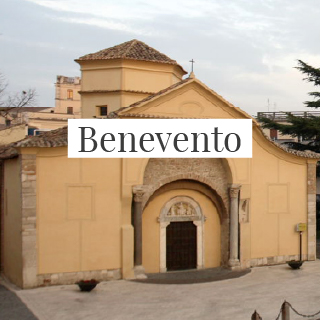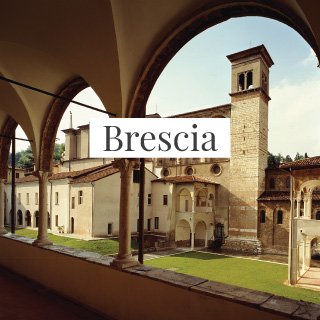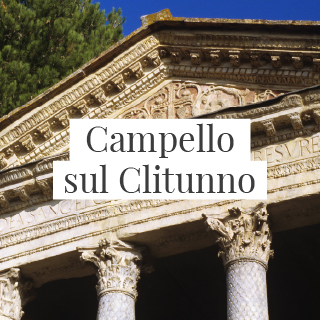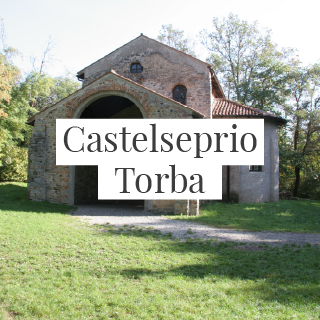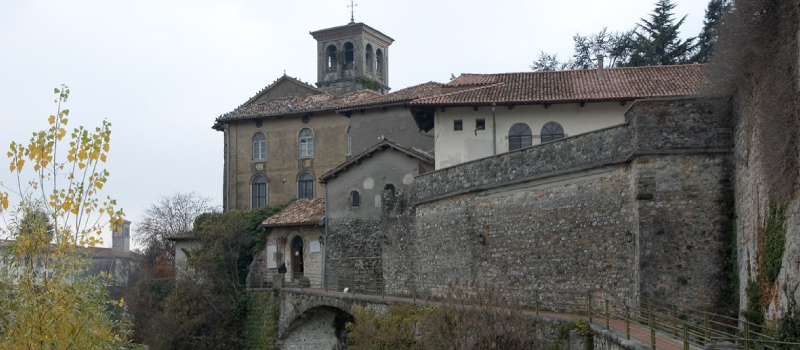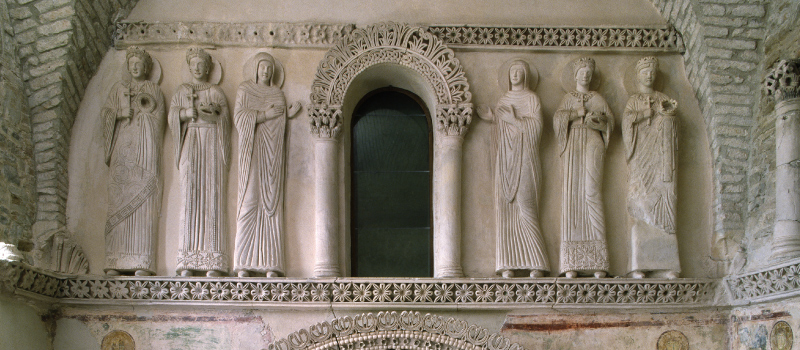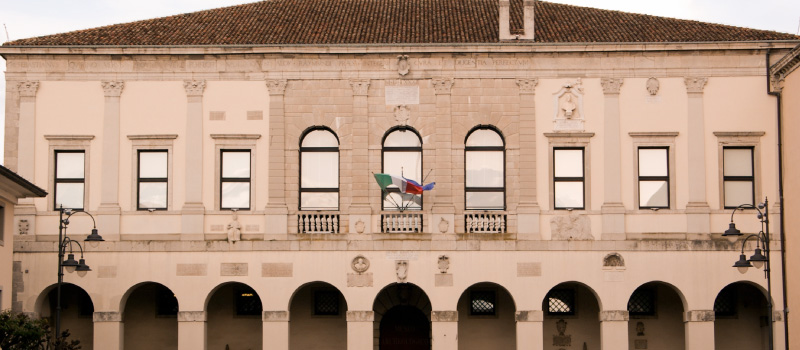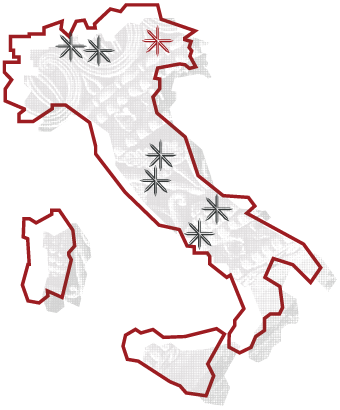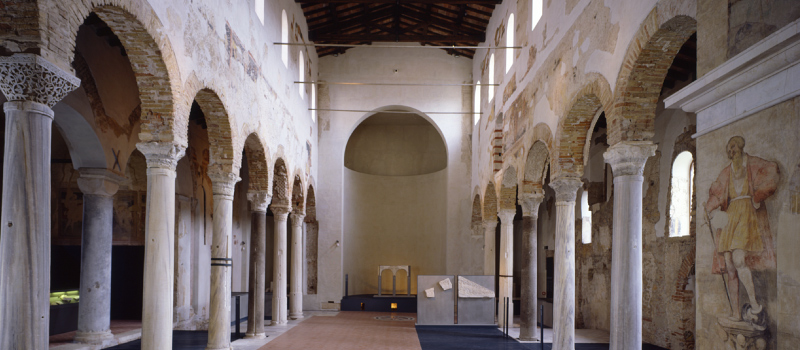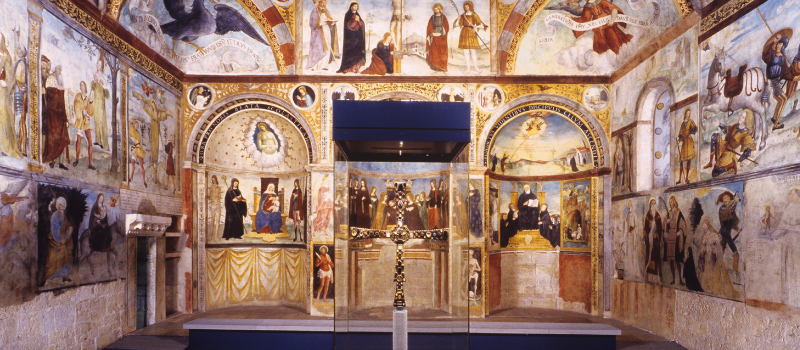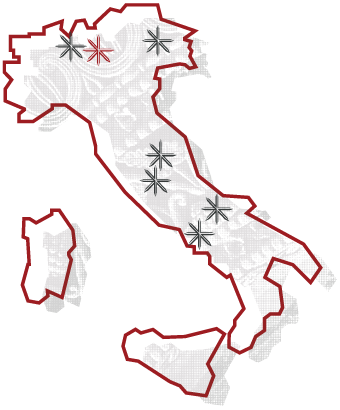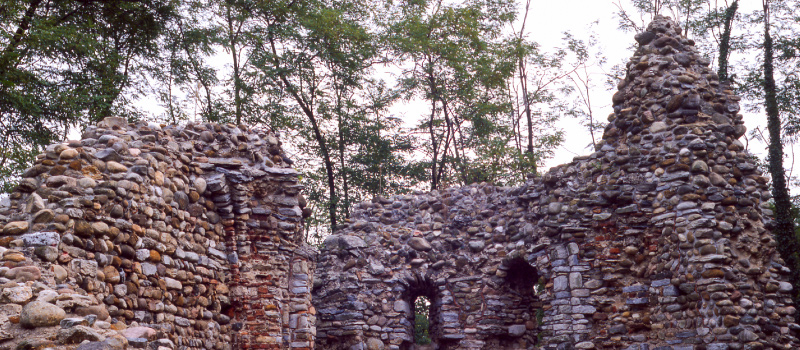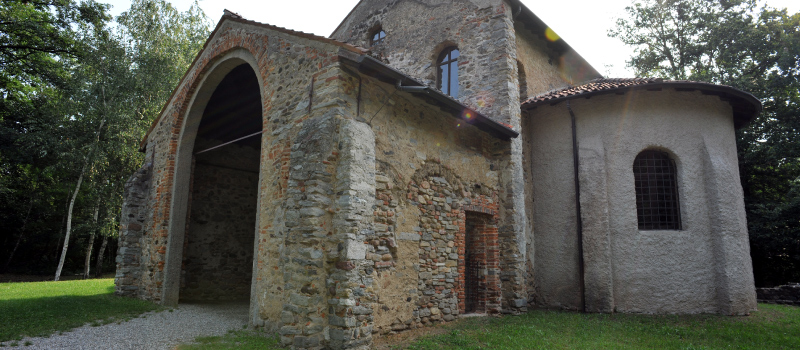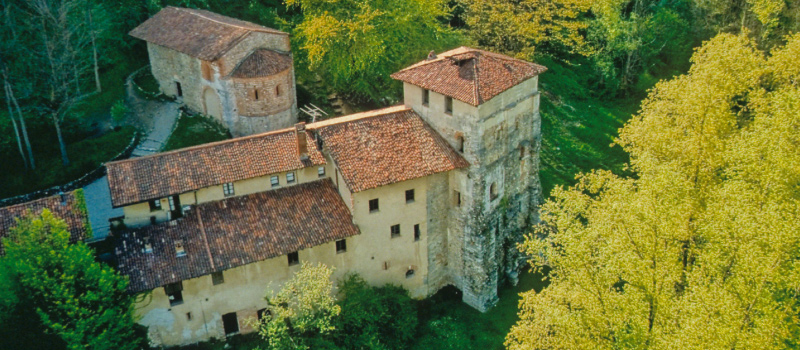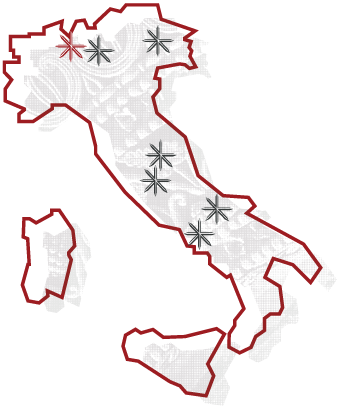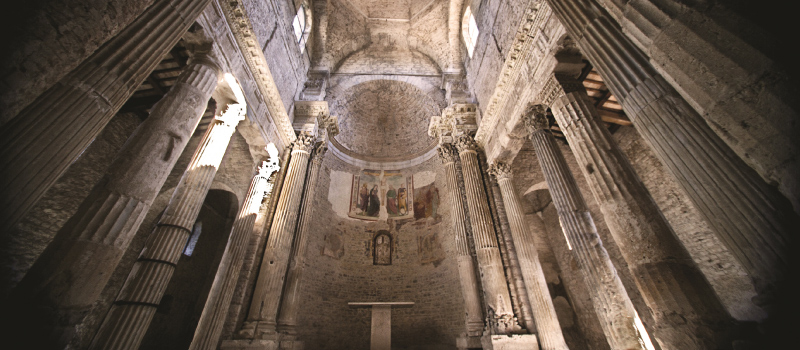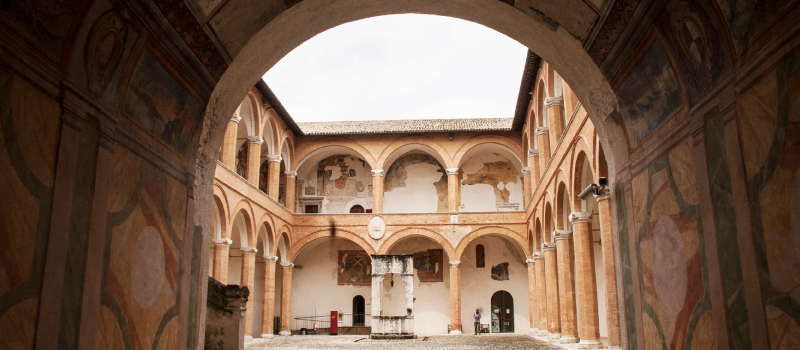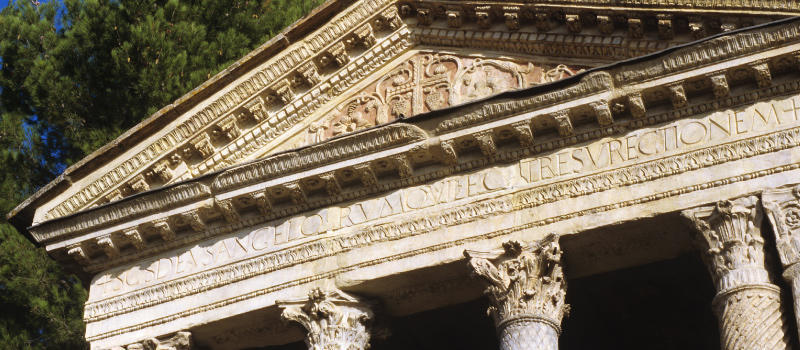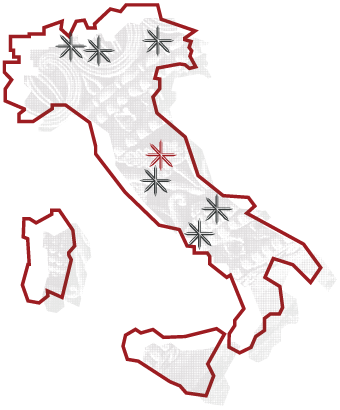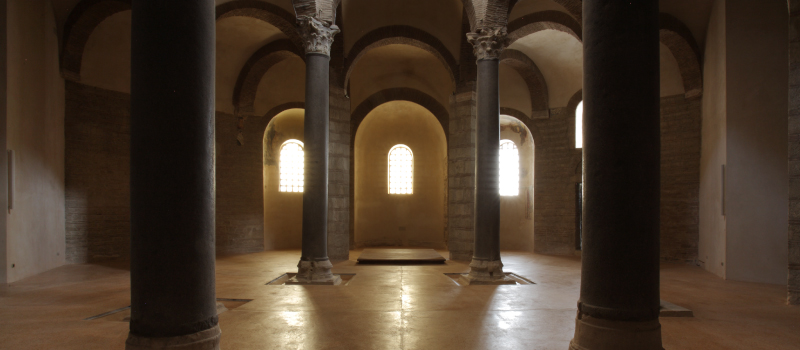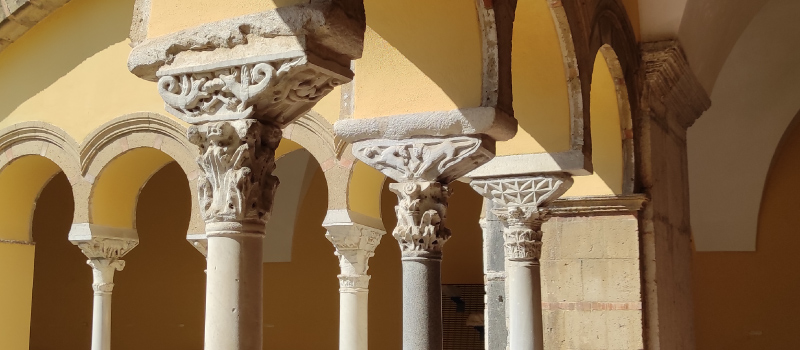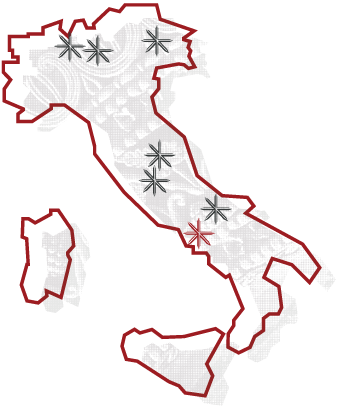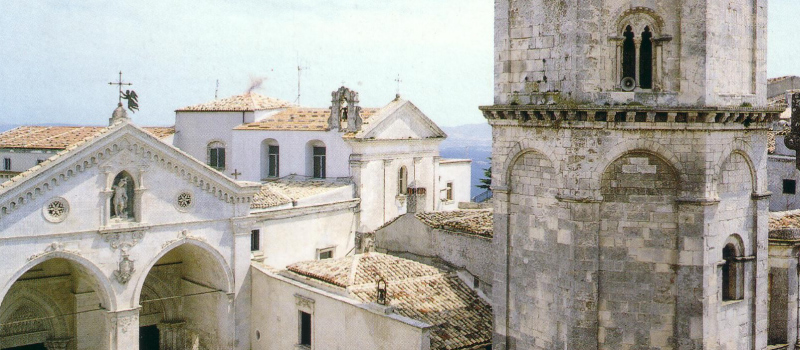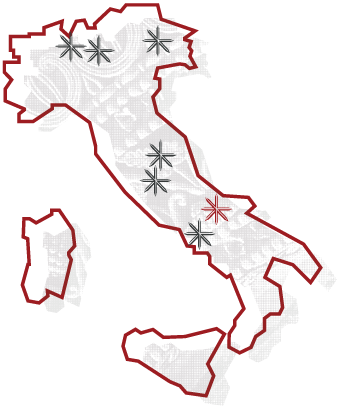Sanctuary Complex of San Michele Arcangelo
The Sanctuary of San Michele Arcangelo
There is evidence of the spread of various pagan cults from the time of Greek colonization until the arrival of Christianity that were closely linked to the site’s physical features.
In particular, healing and divinatory cults present in the area were linked to the seer Calchas and the physician Podalirius. Between the mid and late 5th century the worship of Archangel Michael, which had spread from the East, established itself on the Gargano promontory in the same cave that had housed pagan cults for centuries.
His appearances and revelations in particular qualify the cult of the saint, who performs miracles with water, manifests his strength in miraculous natural phenomena, defends the sanctuary and inspires pilgrims
Appearances of San Michele Arcangelo
The account concerns three episodes related to appearances of the archangel to the Bishop of Siponto, Lorenzo Maiorano, which according to tradition occurred in AD 490 (“The Bull”), AD 492 (“The Victory”), and AD 493 (“The consecration of the church”).
These were the most important moments in the history of the cult of St Michael and the sanctuary.
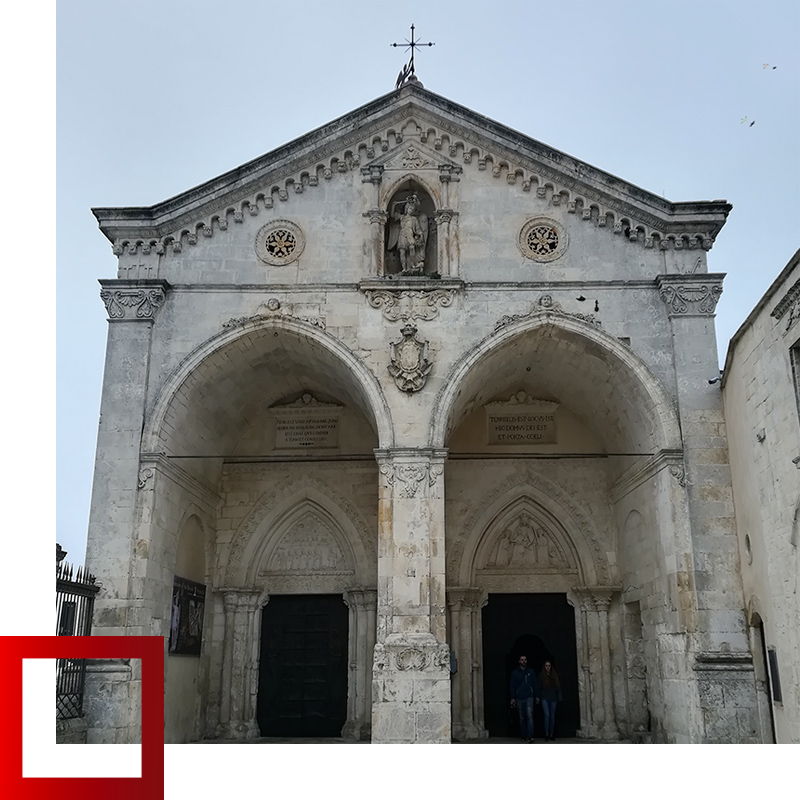
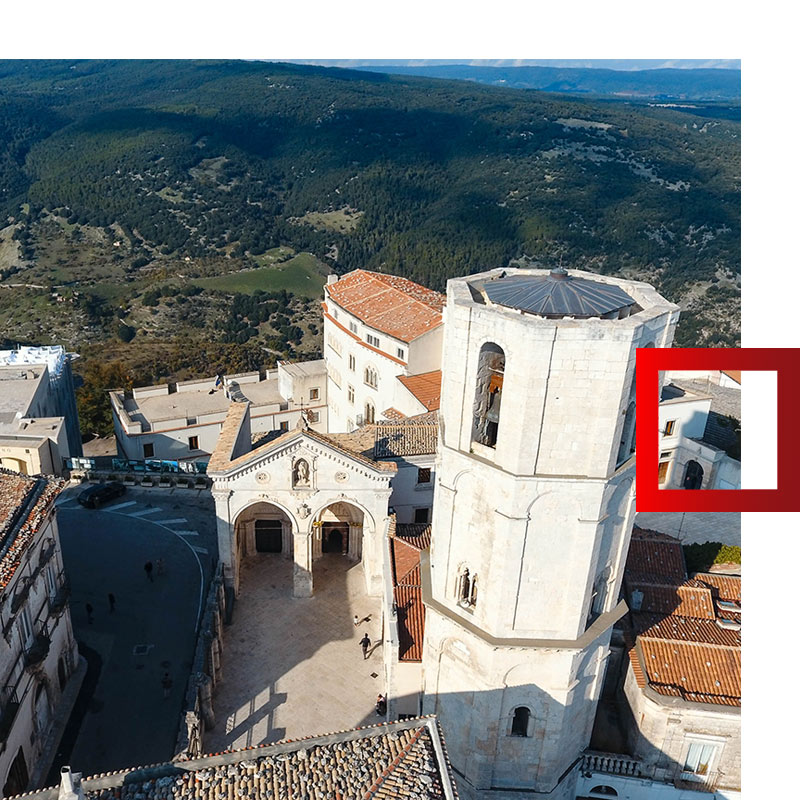
Sanctuary of the Lombards
In 560 the Duchy of Benevento incorporated the Gargano and thus also Monte Sant’Angelo. Since the 5th century it had been dedicated to the cult of the Archangel Michael, who was popular with the Lombards because they saw in him the characteristics of the pagan god of war Wodan, protector of heroes and warriors. From the 7th century the place became the Lombards’ national sanctuary. Devotion to Saint Michael spread throughout the West and Monte Sant’Angelo became the model for all the sanctuaries built in Europe, including the Norman one at Mont-Saint-Michel. The principal Lombard dynasties conducted renovation work to facilitate access to the primitive cave and provide shelter for pilgrims, as recorded by inscriptions found on the site.
The Sanctuary of San Michele Arcangelo is one of the few Early Medieval holy places that has retained its character, with historical continuity and intense visitation by pilgrims up to the present day. In 650, after defeating the Byzantines, the Lombards of the Duchy of Benevento took over the Gargano, where they established the cult of the Archangel Michael.
Structure
The main parts that today constitute the sanctuary, what is known as the Angevin Nave and the cave, combine to great effect. From the mid 7th to 8th century imposing works desired and financed by the Lombard dukes were carried out in the sanctuary: a new staircase was built that led to the altar of the imprints and reached the walkway tor the Basilica Grande, the current cave, which was flanked by a new monumental staircase that started from the ancient entrance. At the same time, the monumental staircase was connected to a tunnel about 40 metres long, which provided temporary accommodation for pilgrims. The man-made liturgical alterations to the natural cave and the inscriptions preserved on the walls of the sanctuary – about two hundred in all, engraved and scratched – allow this extraordinary context, a meeting place for diverse cultures, to be understood.
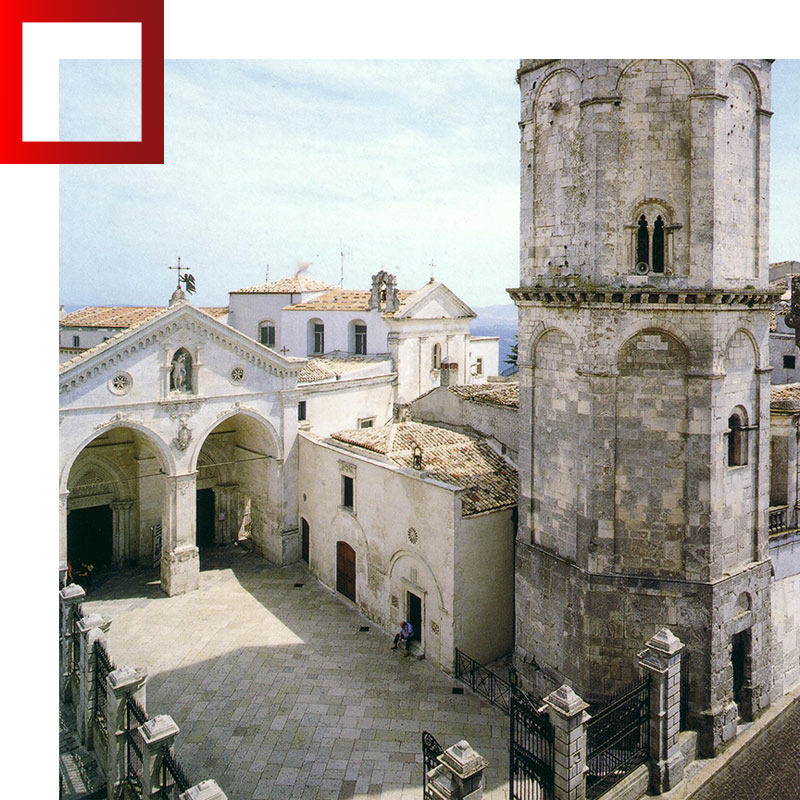
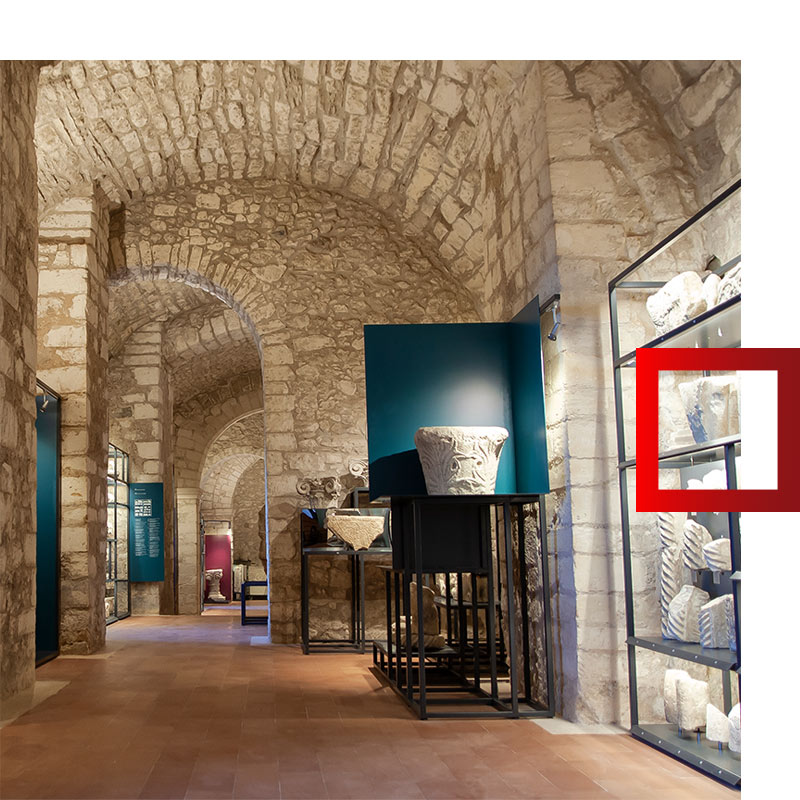
TECUM Museum
Inside the sanctuary, the TECUM Museums (TEsori del CUlto Micaelico) include the Lombard Gallery that houses the worked stone museum, with over 200 sculptural artefacts dating from the 4th to the 15th – 16th century. This abundant collection allows visitors to connect together the oldest places of worship in the area (from both topographical and artistic perspectives) and to follow the evolution of sculptural art in the Gargano area. Inside the worked-stone museum there are nine rooms with barrel vaults made from local stone which lead towards the heart of the mountain. The museum also comprises Crypts B and C, located at the end of the pathway: in this section of the museum the remains of the imposing monumental work conducted in the Gargano sanctuary by the Lombards of Benevento may be seen.
Recovery of the crypts
The so-called “Lombard crypts” were brought back to light by excavations promoted by the local archdeacon Mons. Nicola Quitadamo in 1949-1955, and constituted the primitive nucleus of human interventions in the natural cave. They had been definitively abandoned in the second half of the 13th century, when the Angevins gave the sanctuary its current “downhill” structure to adapt its entrance to the nearby locality where settlement had increased. The previous features were thus hidden under the surface of the new entrance.
Now visible once more, this clearly Lombard-period gallery bears almost two hundred inscriptions made using various techniques between the 6th and 9th centuries.
Although the majority of the names are of Semitic, Latin and Greek origin, there are at least 97 names of Germanic origin that confirm the international nature of pilgrimage to the Gargano mountain, which become a mandatory stop along the Via Francigena that led the faithful to the Holy Land. Of particular importance in this collection of inscriptions are those in Runic alphabets, one of the most important epigraphic discoveries of the last 40 years.
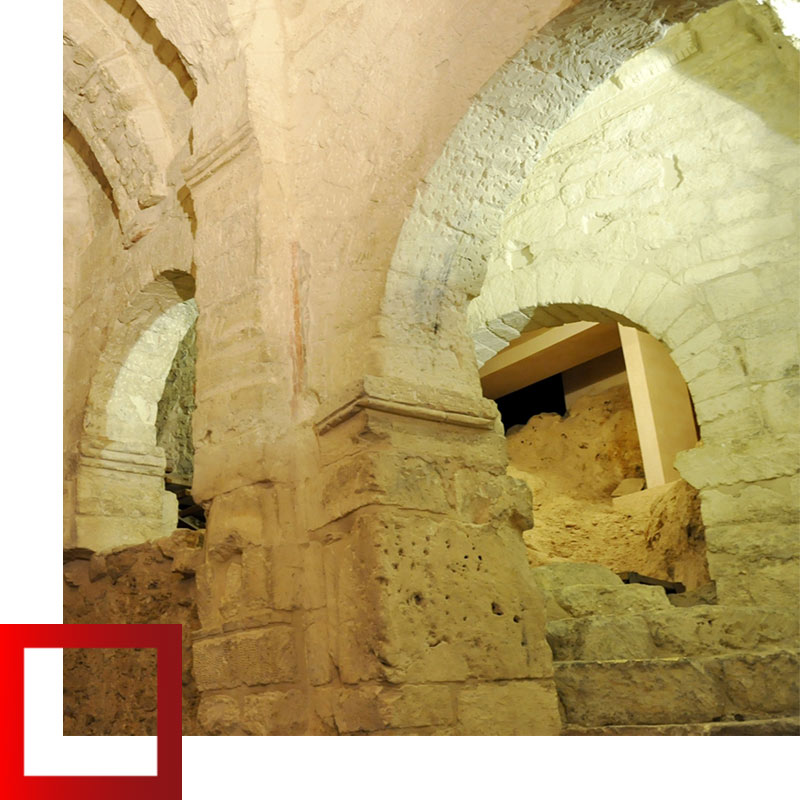
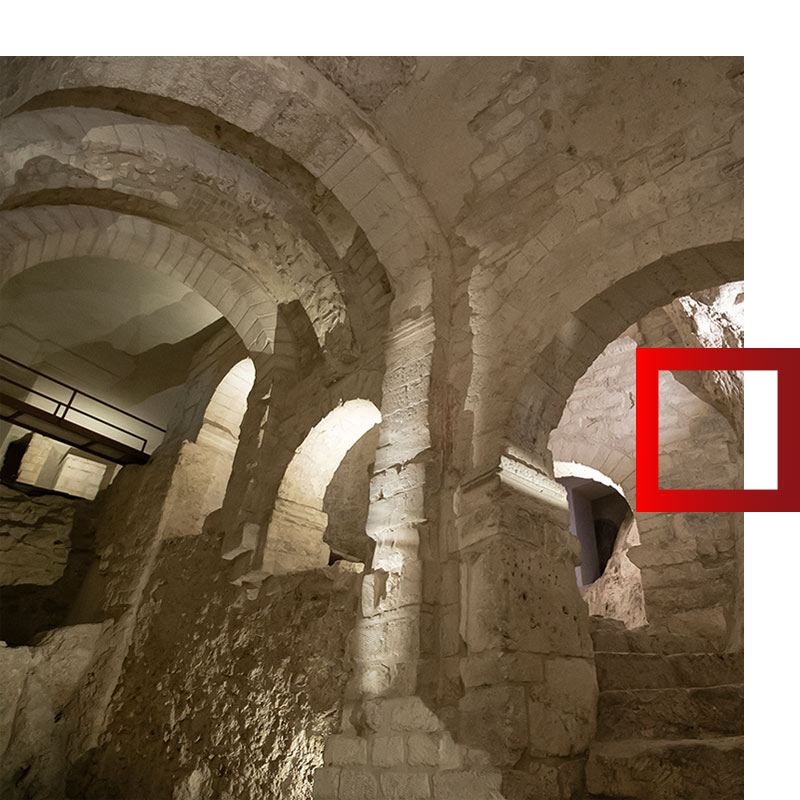
Structure of the crypts
The crypts are about 60 metres long and lie beneath the cave floor and the entrance corridor. The first one is about 45 m long, reaching the mighty support wall on which a bronze door is placed on the upper level. It looks like a gallery with a barrel vault, divided into eight rectangular portions connected together by means of transverse arches that stand on large pillars protruding from the side walls. As was the practice in places of worship, there are clearly recognizable mortuary chambers. In this regard, it is worth mentioning a tradition of ancient origin: in the purely spiritual sanctuary of the Archangel, the presence of corpses was not allowed. However, the most important and wealthy personages did not renounce burial at least near the sanctuary of St Michael, who is identified in the Bible as the one who carries the souls of the deceased to be judged by the Lord.
Visit
Information and contacts
Via Reale Basilica, 127, 71037 Monte Sant’Angelo FG
Tel. 0884 561150
Mail. info@santuariosanmichele.it
Website
VUOTO
Tickets
Full € 5.00
Groups (at least 30 people) € 4.00
Single Audioguide € 2.00 and Groups (at least 30 people) € 1.00
Single Paper Guide € 4.00 and Groups (at least 30 people) € 4.00
Group Guide (at least 30 people) € 1.00
Opening hours
Opening hours from July 1st to September 30th:
Monday 07:30 AM – 08:00 PM
Tuesday 07:30 AM – 08:00 PM
Wednesday 07:30 AM – 08:00 PM
Thursday 07:30 AM – 08:00 PM
Friday 07:30 AM – 08:00 PM
Saturday 07:30 AM – 08:00 PM
Sunday 07:00 AM – 08:00 PM
Opening hours from June 1st to October 31st:
Monday 07:30 AM – 12:30 PM / 02:30 PM – 07:00 PM
Tuesday 07:30 AM – 12:30 PM / 02:30 PM – 07:00 PM
Wednesday 07:30 AM – 12:30 PM / 02:30 PM – 07:00 PM
Thursday 07:30 AM – 12:30 PM / 02:30 PM – 07:00 PM
Friday 07:30 AM – 12:30 PM / 02:30 PM – 07:00 PM
Saturday 07:30 AM – 12:30 PM / 02:30 PM – 07:00 PM
Sunday 07:30 AM – 01:00 PM / 02:30 PM – 08:00 PM
Opening hours from November 1st to March 31st:
Monday 07:30 AM – 12:30 PM / 02:30 PM – 06:00 PM
Tuesday 07:30 AM – 12:30 PM / 02:30 PM – 06:00 PM
Wednesday 07:30 AM – 12:30 PM / 02:30 PM – 06:00 PM
Thursday 07:30 AM – 12:30 PM / 02:30 PM – 06:00 PM
Friday 07:30 AM – 12:30 PM / 02:30 PM – 06:00 PM
Saturday 07:30 AM – 12:30 PM / 02:30 PM – 06:00 PM
Sunday 07:00 AM – 01:00 PM / 02:30 PM – 07:00 PM
